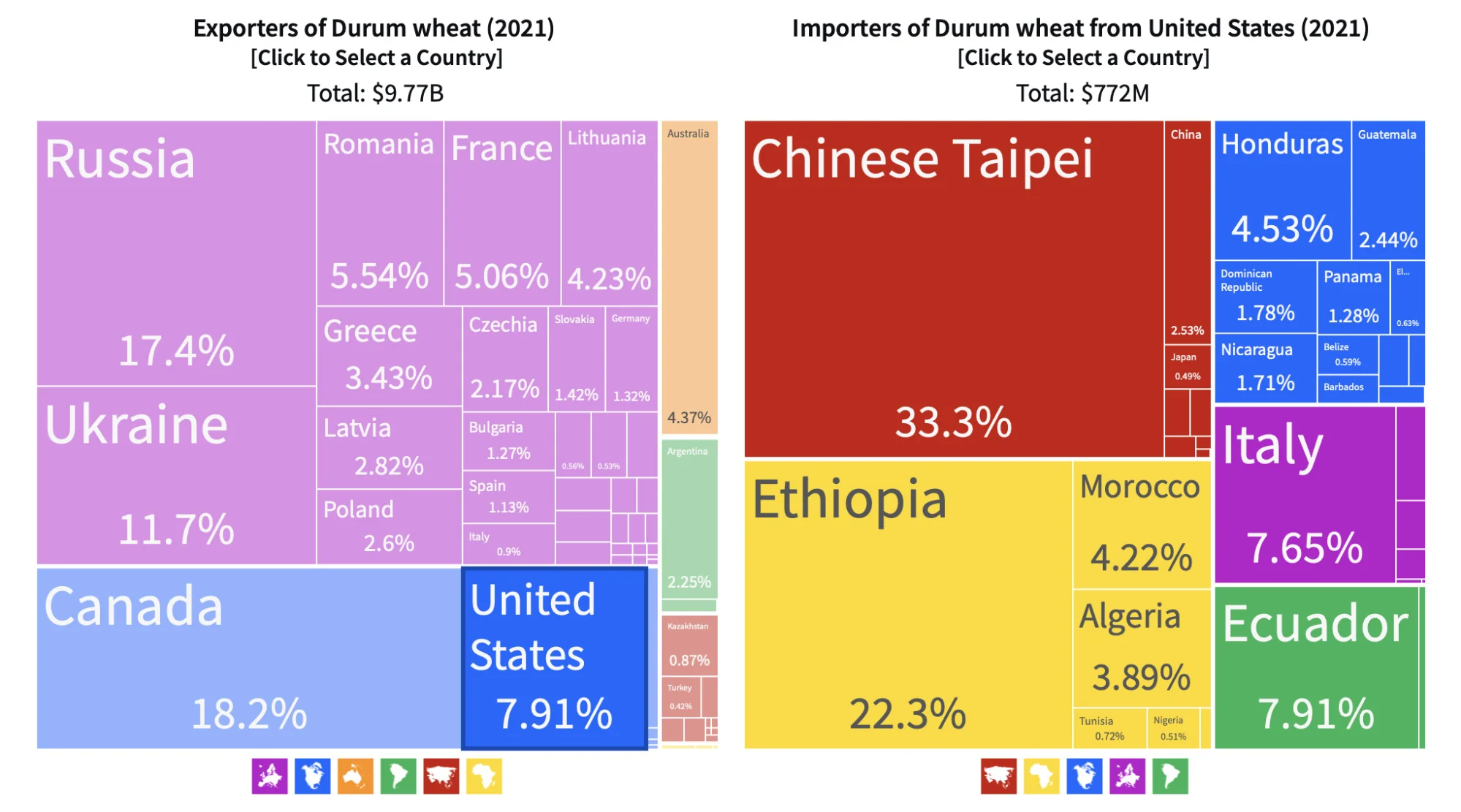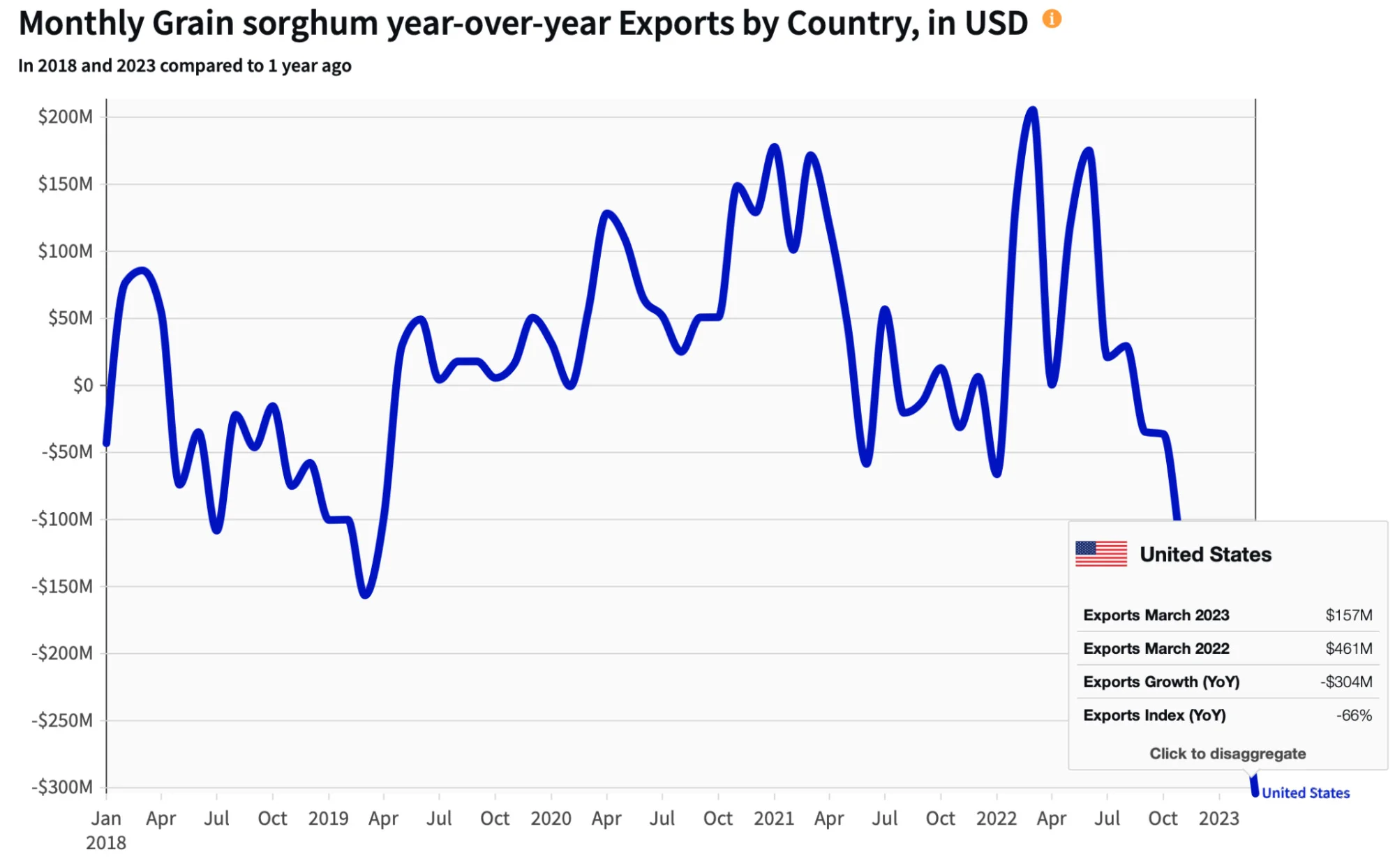A Climate Catastrophe. El Niño Meets the Great U.S. Drought: A Global Food Crisis Looms
DAMNING DATA: You are looking at the geographic signature of El Niño colliding with the drought in the Western United States. We must address an urgent question: how can we identify sustainable solutions before food insecurity disrupts the global food supply?
The "United States of Drought:" A Silent Disaster
The emergence of El Niño on the heels of the worst drought in the Western US in 1,200 years has already begun to disrupt commodity markets with more to come. This climate conspiracy on a planetary scale has forced farmers and ranchers to plow under their crops and cull livestock. As of June 2021, record temperatures have distorted long-standing statistical markers. Averages, medium, and mean heat levels have been recalibrated. The increased intensity and frequency of heat waves have wreaked havoc in the eighteen states that supply 84% of U.S. exports of fruits, cereals, and vegetables.
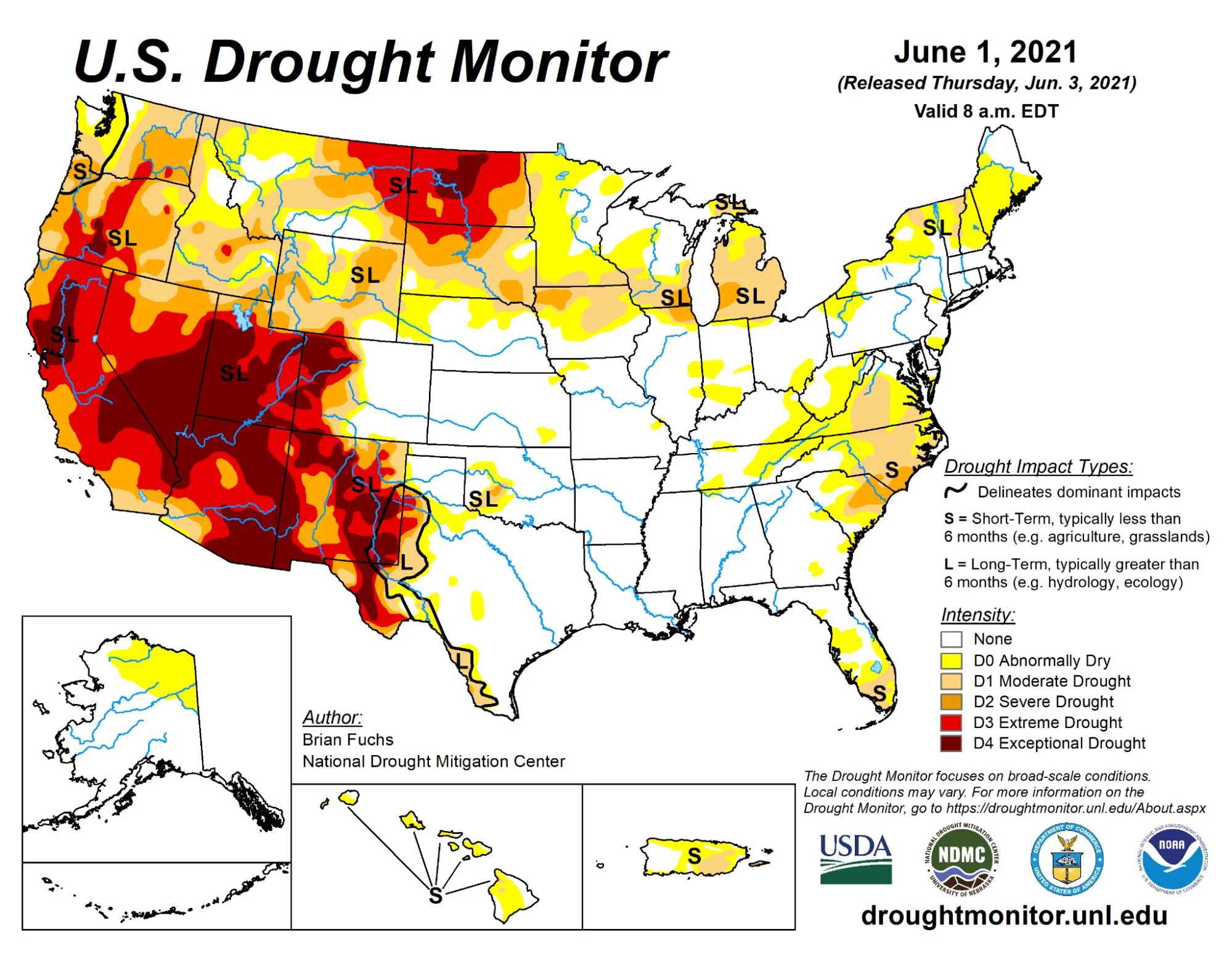
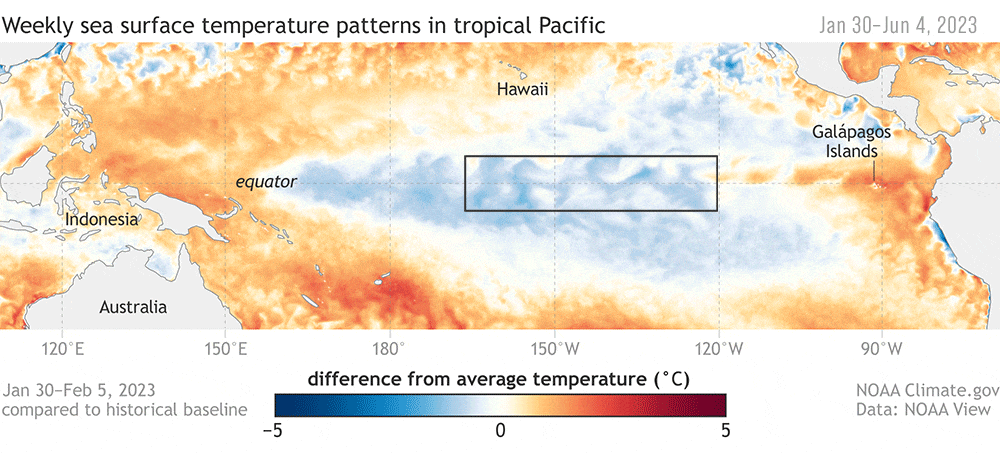
The prolonged U.S. drought has significantly affected the country's agricultural industry, critically impacting crops across several states and challenging the global food supply chain.
The Grain Drain: Wheat Woes
The wheat industry has taken a hard hit, particularly the Durum wheat used for pasta, which has suffered a 50% production drop compared to last year. Yield rates have also plummeted by 41.4%, hinting at future scarcity for the lovers of pasta and other wheat-based products. With the U.S. accounting for about eight percent of global Durum wheat exports, notably to Taiwan, Ethiopia, and Ecuador, these deficits could trigger a ripple effect in the international market.
Barley and Beans: Parched Products
Barley yields recorded a decrease of 33% due to drought conditions. Given that 11% of the barley-producing region was affected, fears are mounting over the availability of barley-derived products like beer and animal feed.
It has been even worse for dried peas and beans, including black-eyed peas. In California, the primary producer, more than half the acreage for these crops was slashed, putting significant upward pressure on prices in commodity markets.
The United States accounts for 23.4% of the global bean trade. Most bean exports originate from the most drought-stricken areas in the Western and Northern Great Plains (90.2%). Growers in the United States harvested 1.03 million tonnes of beans in 2021, a 30% decrease from 2020, with exports taking an enormous hit.
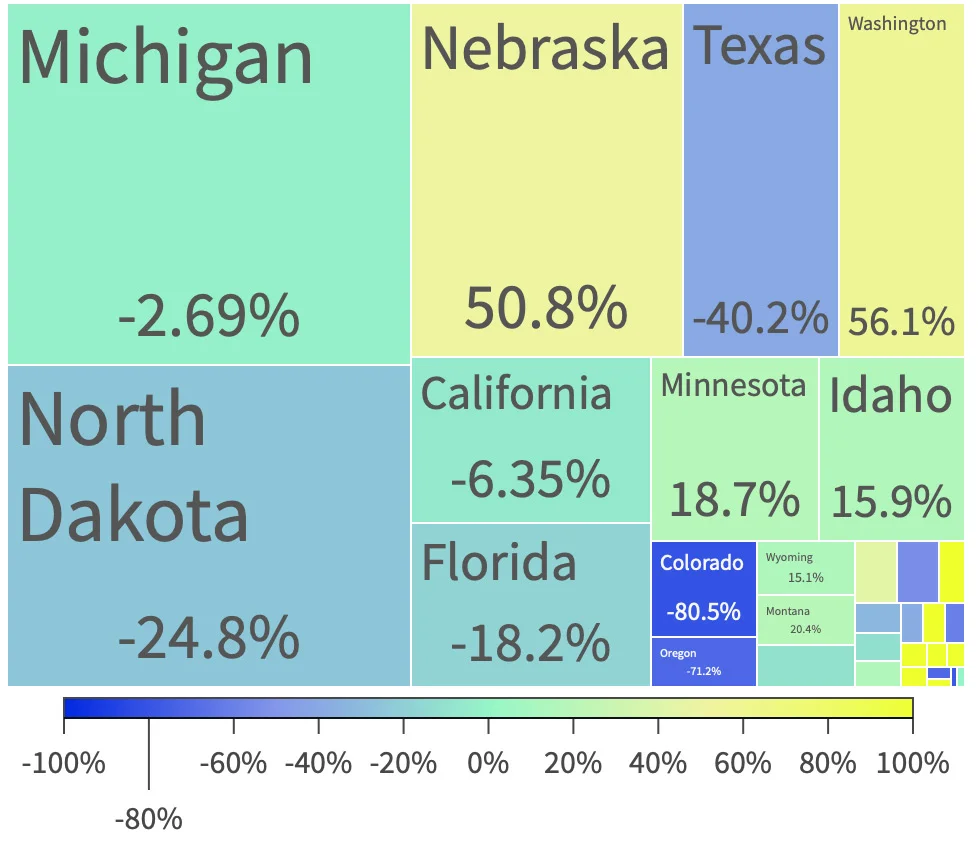
Striking Sorghum, Corn, and Soybean
Sorghum yields, along with corn and soybean, were severely strained by the drought, ravaging over 50% of their production acreage. Though the exact impact on peanut and rice crops remains uncertain, they also experienced a setback, with drought conditions hitting 6% and 9% of their respective cultivation areas.
The data project disturbing trends with grave implications for U.S. food supplies. Diminishing acreage, below-average yields, and impending supply-demand imbalances could push up prices and challenge global food security.
Overall, In the first half of 2022, vegetable exports from the United States declined from 2.26 billion to 1.89 billion kilograms, fruit exports from 2.75 billion to 2.64 billion kilograms, and grain exports from 2.06 billion to 1.75 billion kilos, compared to the same time in 2021.
The onset of El Niño, a cyclical climatic event characterized by temperature spikes in the Pacific Ocean resulting in severe weather patterns, will amplify the impact of the current drought. Economists, climate scientists, and farmers around the world are trying to figure out how much further the global food supply will be diminished. This vicious cycle of human greenhouse gas emissions raising heat levels, fueling atmospheric pollution from wildfires, feeding ever larger storm events from warmer ocean waters, and further disrupting agriculture will only be made worse by the arrival of El Nino. June temperatures are again setting records. How can this cycle be broken?
The Global Implications: Food Insecurity and the Chain Reaction
The combined effects of the Great U.S. Drought and El Niño have far-reaching implications for global food security. Brazil, China, and India are also grappling with severe weather impacts on their agriculture.
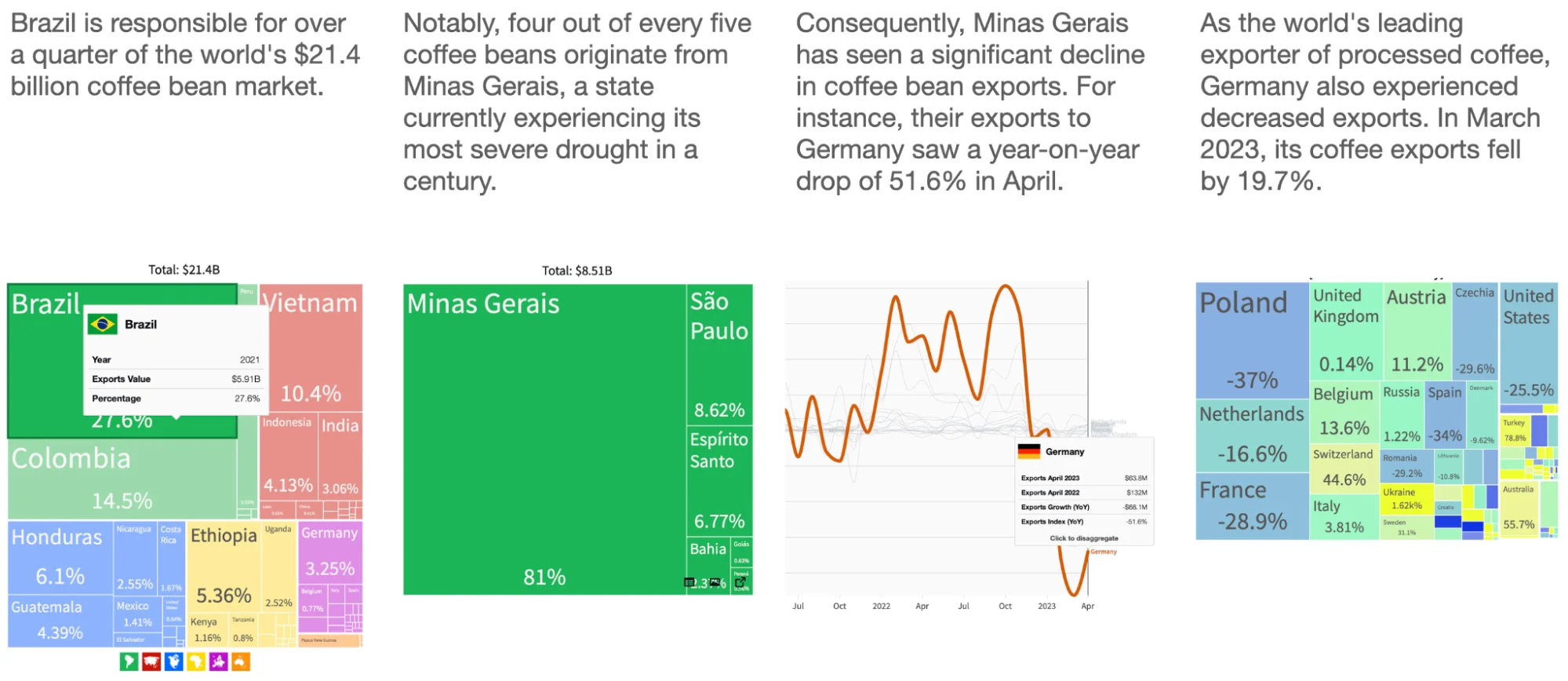
Brazil, a world leader in orange juice, sugar, coffee, soy, and corn exports, is experiencing its worst drought in a century, disrupting global commodity markets. Droughts in China, the largest agricultural producer, are hitting wheat production hard. India's vulnerability to droughts is affecting rice and wheat exports. The grain markets are at the center of the global food supply. Disruptions there bring volatile food insecurity with unpredictable consequences of political and social unrest.
The Path Forward: Global Solidarity and Innovation
As climate change accelerates, our dependence on international cooperation to maintain a stable food supply increases. Projections suggest that by 2050, half of the world's population may face food insecurity.
Addressing this global challenge demands collective action on trade and agriculture. We must invest in innovative food production methods, more efficient distribution and transport technology, improved food access in underdeveloped countries, and strategies that build resilience against climatic disruptions.
The Great U.S. Drought and El Niño are co-conspirators, but they represent only part of a much broader climate crisis threatening our global food supply. By recognizing and responding to these urgent threats, we can take steps toward a more sustainable and secure global food system. The time to act is now.
